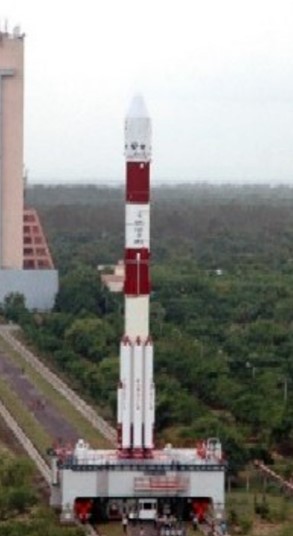Chandrayaan 1, India’s first lunar mission
- Chandrayaan 1, India’s first lunar mission, launched on October 22, 2008, marked a significant milestone in the nation’s space exploration endeavors.
- This line introduces the keyword “Chandrayaan 1” and highlights its importance as India’s first mission to the Moon. It signifies a notable achievement in the country’s pursuit of space exploration.
Table of Contents

The ambitious mission aimed
- The ambitious mission aimed to explore the mysteries of the Moon and lay the groundwork for future space exploration.
- This line emphasizes the primary goals of Chandrayaan 1, which were to investigate the unknown aspects of the Moon and establish a foundation for future space exploration endeavors.
- Equipped with advanced scientific instruments and technology, Chandrayaan embarked on a historic journey to unravel the secrets of the lunar surface.
- This line highlights the advanced scientific instruments and technology carried by Chandrayaan- 1, showcasing its capability to delve into the hidden secrets of the Moon’s surface.
- One of its key objectives was to map the Moon’s topography, mineral composition, and the presence of water ice in its polar regions.
- This line specifies one of the important objectives of Chandrayaan 1, which was to create detailed maps of the Moon’s surface features, identify its mineral composition, and investigate the presence of water ice near the lunar poles.
- The spacecraft, carrying sophisticated payloads from India as well as international partners, successfully orbited the Moon for over 300 days, collecting invaluable data and images.
- This line describes how Chandrayaan 1, carrying advanced scientific instruments from both India and international collaborators, successfully completed over 300 days of orbit around the Moon. It emphasizes the collection of valuable data and images during this period.
- Its high-resolution remote sensing instruments captured detailed images of the lunar surface, providing scientists with a wealth of information about the Moon’s geological features.
- This line highlights the capabilities of Chandrayaan 1’s high-resolution remote sensing instruments, which captured detailed images of the Moon’s surface. It emphasizes that these images offered scientists a wealth of information about the geological characteristics of the Moon.

- Chandrayaan 1’s most notable discovery was the detection of water molecules on the lunar surface, a groundbreaking finding that opened up new possibilities for future manned missions and potential lunar colonization.
- This line showcases the most significant discovery made by Chandrayaan 1, which was the detection of water molecules on the lunar surface. It emphasizes that this groundbreaking finding has important implications for future manned missions to the Moon and the potential for lunar colonization.
- The success of Chandrayaan 1 paved the way for subsequent space missions, both from India and other countries, to continue exploring the Moon and beyond.
- This line highlights how the achievements of Chandrayaan 1 served as a foundation for future space missions. It signifies that the success of Chandrayaan 1 inspired not only India but also other countries to undertake further exploration of the Moon and beyond.
- It demonstrated India’s capabilities in space technology and positioned the nation as a key player in the global space race.
- This line emphasizes that the success of Chandrayaan 1 showcased India’s prowess in space technology and solidified its position as an important participant in the global competition for advancements in space exploration.
- Today, Chandrayaan 1’s legacy lives on, serving as a testament to human curiosity and the relentless pursuit of knowledge.
- This line highlights that even today, the impact and significance of Chandrayaan 1 endure. It signifies that the mission stands as a testament to innate human curiosity and the tireless quest for knowledge.
- It’s discoveries and scientific achievements continue to inspire future generations of space explorers, fueling the dream of venturing further into the cosmos.
- This line indicates that the discoveries and scientific accomplishments of Chandrayaan 1 serve as a source of inspiration for future generations of space explorers. It suggests that these achievements fuel the aspiration to explore deeper into the vastness of the universe.

Goals
Chandrayaan 1 had several key goals and objectives that it aimed to achieve during its mission. Here are the primary goals of the Chandrayaan 1 lunar mission:
- Lunar Topography: Chandrayaan 1 aimed to extensively map the lunar surface to understand its topography, including the elevation, contours, and roughness. This information would provide crucial insights into the Moon’s geological evolution and its impact history.
- Mineral Mapping: The mission sought to identify and map the distribution of various minerals on the lunar surface. By analyzing the composition of different regions, scientists could gain a better understanding of the Moon’s geological processes and its similarities or differences with Earth.
- Water Ice Detection: Chandrayaan 1 aimed to search for evidence of water ice on the Moon, particularly in the permanently shadowed regions near the lunar poles. The presence of water ice would have significant implications for future lunar exploration and potential resource utilization.
- Lunar Atmosphere: The mission aimed to study the extremely thin lunar atmosphere, known as the exosphere, to better comprehend its composition and characteristics. This data would contribute to our understanding of how atmospheres evolve on airless bodies like the Moon.
- Lunar Impact History: Chandrayaan 1 aimed to investigate the Moon’s impact history by studying the lunar craters and their characteristics. By analyzing the impact craters and ejecta patterns, scientists could gain insights into the frequency and intensity of past cosmic collisions.
- Technological Demonstrations: The mission also aimed to demonstrate India’s technological capabilities in deep space exploration. It included testing and validating various instruments and technologies that would be crucial for future space missions.
By achieving these goals, Chandrayaan 1 aimed to significantly contribute to our understanding of the Moon, its geological evolution, and its potential as a future destination for scientific research and human exploration.
Specification
Chandrayaan 1, India’s first lunar mission, was a technologically advanced spacecraft designed to carry out a range of scientific investigations and experiments. Here are some key specifications and features of Chandrayaan 1:
- Launch Vehicle: Chandrayaan 1 was launched aboard the Polar Satellite Launch Vehicle (PSLV-C11) on October 22, 2008, from the Satish Dhawan Space Centre in Sriharikota, India.
- Spacecraft Dimensions: The spacecraft had a cuboid shape with approximate dimensions of 1.5 meters (4.9 feet) in height, 1.5 meters in width, and 1.8 meters (5.9 feet) in length. It had a launch mass of about 1,380 kilograms (3,040 pounds).
- Orbiter: The primary component of Chandrayaan 1 was the Orbiter, which was designed to orbit the Moon at an altitude of around 100 kilometers (62 miles). The Orbiter housed various scientific instruments and equipment.
- Payloads: Chandrayaan 1 carried 11 scientific payloads (instruments) on board, which included both Indian and international contributions. Some of the notable instruments were:
- a. Terrain Mapping Camera (TMC): TMC captured images of the lunar surface with high spatial resolution, aiding in lunar topography mapping.
- b. Hyper Spectral Imager (HySI): HySI provided data for mineral mapping and identification of specific mineral composition on the Moon.
- c. Moon Mineralogy Mapper (M3): M3 aimed to study the mineral composition of the lunar surface and detect the presence of water molecules.d. Lunar Laser Ranging Instrument (LLRI): LLRI was used to measure the distance between the spacecraft and the lunar surface, providing precise data on the Moon’s gravitational field.
- Communication: Chandrayaan 1 used multiple communication systems, including a Deep Space Network (DSN) for tracking, telemetry, and command operations. It established communication links with ground stations to transmit scientific data and receive commands.
- Mission Duration: The mission was initially planned for a two-year operational period. However, Chandrayaan 1 successfully operated for over 300 days, exceeding its designed lifespan.
- Mission Achievements: During its mission, Chandrayaan 1 achieved several significant milestones, including the detection of water molecules on the lunar surface and the mapping of the Moon’s topography and mineral distribution.
Chandrayaan 1 showcased India’s technological prowess in space exploration and contributed valuable scientific data that furthered our understanding of the Moon. Its success paved the way for subsequent lunar missions and demonstrated India’s capabilities in the global space arena.
Mission Timeline
- October 22, 2008: Launch – Chandrayaan 1 is successfully launched aboard the PSLV-C11 rocket from the Satish Dhawan Space Centre in Sriharikota, India.
- October 23, 2008: Lunar Transfer Trajectory – The spacecraft initiates its journey towards the Moon by entering a Lunar Transfer Trajectory.
- October 25, 2008: Lunar Orbit Insertion – Chandrayaan 1 enters the lunar orbit by performing a critical maneuver known as Lunar Orbit Insertion (LOI).
- November 8, 2008: Payload Activation – The scientific payloads and instruments onboard Chandrayaan 1 are activated, marking the beginning of the data acquisition phase.
- November 14, 2008: Terrain Mapping Camera (TMC) Operation – TMC, one of the key instruments on board, starts capturing high-resolution images of the lunar surface for topographical mapping.
- November 15, 2008: Mineralogy Mapper (M3) Activation – M3 begins its operation to study the mineral composition of the Moon and search for water molecules.
- November 25, 2008: Imaging Lunar Craters – Chandrayaan 1’s instruments capture detailed images of lunar craters, aiding in the study of the Moon’s impact history.
- December 22, 2008: Earth Rise Image – The spacecraft captures a stunning image of the Earth-rise from the Moon, showcasing its unique perspective.
- January 22, 2009: Lunar Impact Probe (MIP) Release – The MIP, a small impactor carried by Chandrayaan 1, is released and impacts the Moon’s surface near the Shackleton Crater.
- March 9, 2009: Discovery of Water Molecules – Chandrayaan 1’s instruments, particularly the M3, confirm the presence of water molecules on the lunar surface.
- August 29, 2009: Communication Loss – Contact with Chandrayaan 1 is lost unexpectedly, marking the end of the mission’s operational phase.
- August 31, 2009: Official Termination – The Indian Space Research Organisation (ISRO) officially declares the Chandrayaan 1 mission as terminated.
Despite its premature end, Chandrayaan 1 successfully achieved numerous scientific milestones, including the detection of water on the Moon and the collection of valuable data about lunar topography and mineral distribution. It remains a landmark mission in India’s space exploration journey.

Pingback: 22. Height Increase Insole: The Ultimate Style Hack: Elevate Your Height with Trendy and Discreet Insoles - Interestopedia
Pingback: Chandrayaan 1 to Chandrayaan 3: Unveiling India's Journey to Conquer the Moon. - Interestopedia
Pingback: 23. Chandrayaan 1 to Chandrayaan 3: Unveiling the Ultimate Mysteries of Space: Chandrayaan 1's Groundbreaking Discoveries That Will Leave You Breathless/Chandrayaan 1 to Chandrayaan 3: Unveiling India's Journey to Conquer the Moon. - Interestope
Pingback: 24. eToro: Master the Art of Bitcoin Investment: Your Complete Guide to Buying on eToro - Interestopedia
Pingback: 25. Electric Toothbrush Charger: Never Run Out of Juice: The Ultimate Guide to Extending Your Electric Toothbrush Charger's Lifespan! - Interestopedia